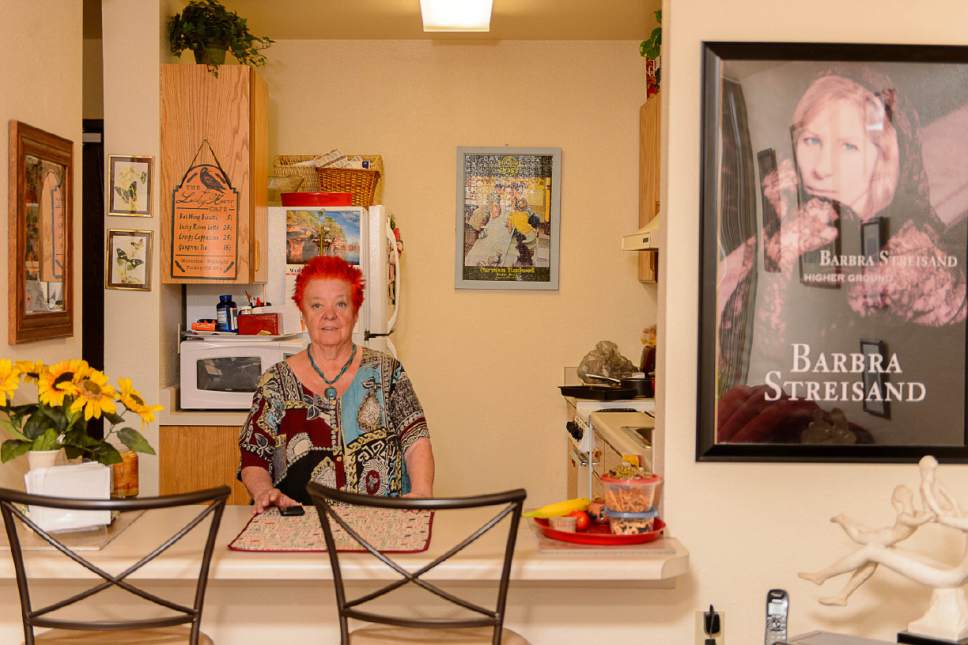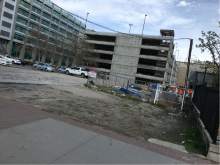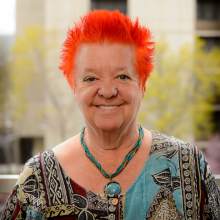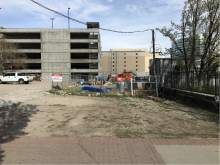This is an archived article that was published on sltrib.com in 2017, and information in the article may be outdated. It is provided only for personal research purposes and may not be reprinted.
Editor's note • In this regular series, The Salt Lake Tribune explores the once-favorite places of Utahns, from restaurants to recreation to retail.
Salt Lake City's Radio City Lounge was known as the oldest gay bar west of the Mississippi.
In the first decade after it opened in 1948, most of Radio City's gay and straight clientele (as well as the bar's moniker) came from the radio and TV stations headquartered along Social Hall Avenue, just north of the building's address at 147 S. State.
By the late 1950s, an evolution had begun.
"It was a straight bar during the day, then at 7, the gay community started coming in," says Rose Carrier, who started pouring pints at Radio City in 1960. She had been working at another bar when owners Elvin Gerrard and Lee Caputo — both straight — offered her a job at Radio City, her first exposure to people many at the time considered deviant, even mentally ill.
"I started serving them, and I thought, These are really great people," says Carrier. "I felt the love from them."
During the day, gay customers began coming into the bar — where Carrier would greet them with a kiss on a cheek — which the bar's straight customers thought "was terrible," Carrier says. "They stopped coming in at all."
But the bar's welcoming atmosphere and relative safety made it a refuge for gay men in the pre-Stonewall era.
Carrier says she could sense the nervousness of people who had mustered the courage to walk in the door for the first time.
"I would introduce everybody to each other," says Carrier. "If somebody was sitting alone at the end of the bar, I would make him come up and join us. You couldn't just sit there and be by yourself."
—
Displays of same-sex affection were illegal in the 1960s, and police would occasionally raid Radio City, looking for hand-holding, kissing and dancing.
It was also illegal for men to dress as women. One night during a drag show, the police showed up, handcuffs ready.
Carrier was one of those arrested — "Maybe they thought I was a drag queen," she says.
But over time, Carrier says, she got to know the police and was able to get advance notice of their raids — in time to warn everyone to run out the back.
The back entrance was one of Radio City's key features, a clandestine passage through which closeted men could avoid being seen walking into the bar.
"That whole area was kind of the red light district," says Utah LGBT historian Ben Williams. "Radio City didn't have a sign out front, and you would hardly know it was a bar unless you'd been inside. Back in the 1950s and 1960s in Utah, nobody wanted to be seen going into a bar, much less a gay bar."
Bob Sorensen started going to Radio City in 1960, when he was 18. He'd altered his paper driver license to appear to be of legal drinking age, but it took him six months to "get up the nerve" to actually go inside.
"Finally, one evening I was walking by and just walked in the door," Sorensen says. "The first seat at the bar was vacant, so I sat down. I told the bartender I wanted a beer, and he said, 'A draft?' and I said 'No, a beer.' The guy next to me started laughing because obviously I didn't even know what a draft was.
"So I got a beer and lit up a cigarette. The guy next to me turned to go to the bathroom and brushed my leg — and I was out on State Street in no time at all, I was so scared."
But the bar eventually became a home away from home for him, a welcoming extended family that adopted him after he divorced himself from his church family.
"I was raised a very staunch Mormon. ... I prayed a lot to change because I knew this was not acceptable and the church was not going to accept me," he says.
He met his future husband, Jim Swensen, at Radio City in 1966. They now live in Arizona.
"He was the cutest little bleached blond," says Sorensen. "I wanted to talk to him, but I had pretty low self-esteem. A week later, I was with a friend across the street at this movie theater and I'm thinking, 'Jimmy is over there and somebody's going to pick him up.' So I left and went over to the bar. ... I got up my courage and sent him a beer, the first time I'd ever done that."
Radio City, Sorensen says, "was the first place where I could actually be myself. ... I was among my own and didn't have to worry anymore."
—
Salt Lake City real estate agent Babs De Lay first went to Radio City in the mid-70s. Newly out at the time, she remembers it being a bit scary at first, but ultimately a welcoming place — a sort of gay Cheers.
"It was also very woman-friendly," De Lay recalls. "You had Rose [Carrier] behind the counter, and ... she really cared. And when she cared, we cared. She kept tabs on everybody."
Carrier played the traditional role of bartender-slash-psychiatrist for her customers, many of whom were married Mormon men with children at home.
"They would come in and meet men, then would have to go home to their wives and kids," she says.
Others "had parents who tried to change their minds so they wouldn't be gay anymore," Carrier says. "I saw a lot of people die from suicides because they were so afraid and lonely."
Once, a woman stormed into the bar looking for her husband — armed with a gun, which she pointed straight at Carrier.
"I said, 'You'd better put that down because I'm calling the police,' " Carrier remembers. "She was going, 'Where is he, where is he?' I told her he wasn't there, even though he had been in earlier."
Eventually the cops came and took the woman away.
Later, AIDS had many victims among Radio City's clientele. Friends who were dying would come down to the bar to say their goodbyes.
"Some had to be carried in," Carrier says. "It was very hard."
De Lay remembers that one of the first people to die of AIDS in Salt Lake City was a man named Leonard, who took part in the bar's drag shows and was a "dead ringer for Diana Ross," she says.
"I was madly in love with him, I was so convinced he was a woman. My gay boyfriends told me she was not a woman, and I said, No, no, I'm sure this was a woman; he was so good," she says.
De Lay, meanwhile, had gone from a fan of the drag shows to a pioneering participant.
"I had many friends who were drag queens, and I was working as sort of a 'fluffer,' carrying their wigs, helping them on with their clothes and making sure they were tucked right," she says. "The prize was $25, and I was thinking, 'How could I beat a drag queen?' Because they're awfully good. So I thought, I'll get into drag as a guy and see if that will work. They had never seen a woman playing a man, and because of that, I think, I won."
It was the crowning of Utah's first drag king.
—
When the gay liberation movement began gaining ground in the early 1970s, Radio City began getting competition. By the 1980s, there were Salt Lake bars like Backstreet, the Deerhunter, the In Between, Puss'n Boots, Three Aces, Perky's, the Sun Tavern and The Trapp, among others.
"It once was so crowded at Radio City that it would take you 20 minutes to get a beer," says Sorensen. "But when the Sun opened in 1973, you were lucky if you found 12 people at Radio City."
Radio City was also small, and the newer bars had large dance floors, which brought younger crowds, seeking more of a club atmosphere.
"I remember when line dancing came into fashion, and you couldn't line dance at Radio City — their dance floor was as big as a table," De Lay says.
By the late 2000s, Radio City had become a magnet for illicit activity, with reports of violence and drug incidents. In 2007, a man carrying 51 balloons of cocaine was arrested in the bar and booked with intention to distribute.
"It had just gone to hell, and if you weren't going there for drugs, you didn't want to be there," says Carrier. "People were going to other places. The owners finally got a good price and they sold it."
Radio City went out with one last party, on Aug. 23, 2009, and Carrier was invited back to tend bar.
"It was so much fun to be behind that bar again," she recalls. "Some of the old people came to say goodbye to the place, and we talked about the good old days."
Radio City co-owner Elvin Gerrard died in 2012. His business partner Lee Caputo died in 2014. The old Radio City site is now an empty dirt lot, in the shadow of new construction and a rising downtown.
"I hated to see it go," Carrier says, "but I thought, well, you made a lot of good friends there, and that's what it's all about."













